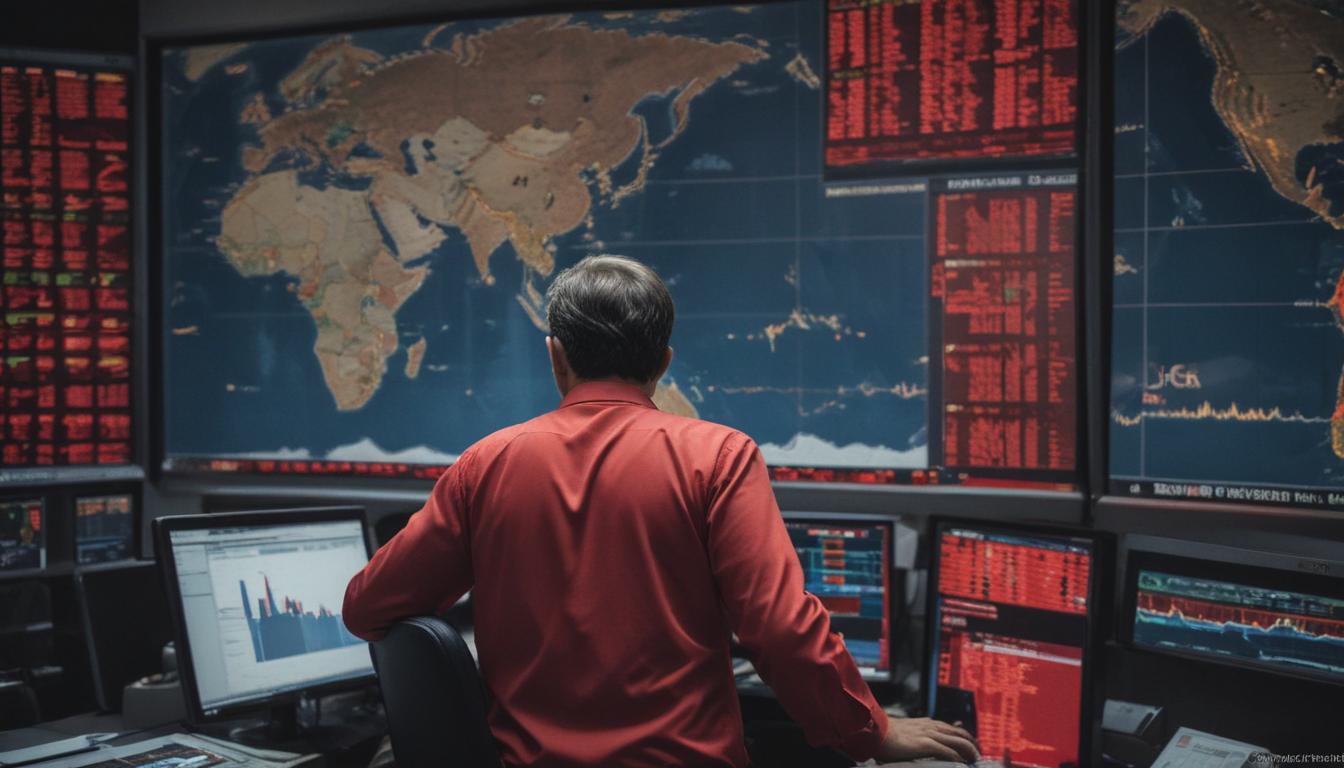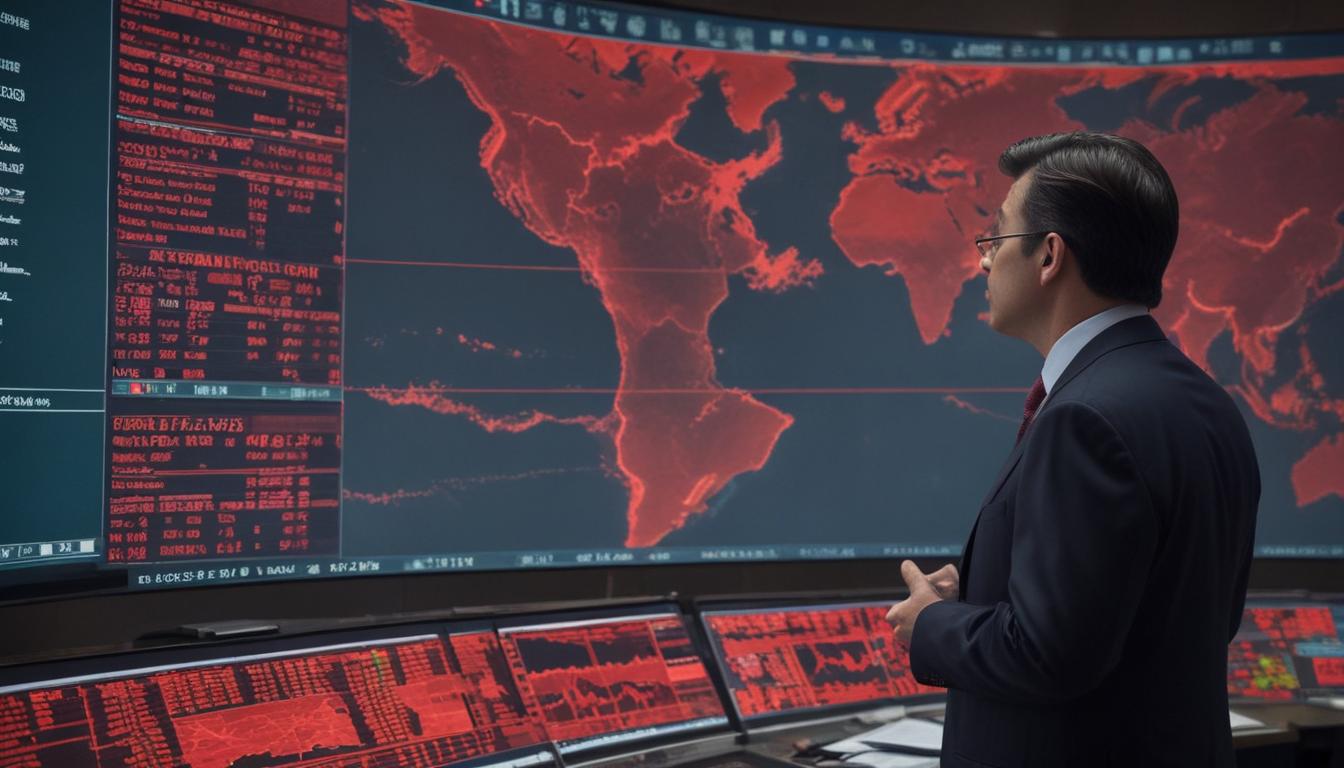Now Reading: How Geopolitics Moves Markets
- 01
How Geopolitics Moves Markets
How Geopolitics Moves Markets

The Unseen Hand How Geopolitics Moves Financial Markets
Have you ever watched the news about a tense international summit or a conflict unfolding thousands of miles away and felt a knot in your stomach, wondering what it means for your investments? You check your portfolio the next day and see a sea of red, confirming your fears. This feeling of helplessness is common for investors who see global events trigger wild swings in the market but don’t fully understand the connection. It can lead to panicked decisions, like selling at the bottom or staying on the sidelines while opportunities pass by.
This uncertainty doesn’t have to control your financial journey. The key to navigating this volatility isn’t to predict the future, but to understand the fundamental ways that geopolitics and financial markets are intertwined. By grasping the mechanics of how international relations influence stock prices, commodity values, and currency fluctuations, you can move from a place of reaction and fear to one of strategy and confidence. This guide will demystify these complex interactions, giving you the clarity needed to make sound, long-term decisions for your portfolio, no matter what the headlines say.
The Core Connection World Events and Your Wallet
The primary channel through which geopolitics impacts financial markets is uncertainty. Markets are forward-looking mechanisms that thrive on predictability and stable growth. When a major geopolitical event occurs, whether it is a trade dispute, a surprise election outcome, or the outbreak of a conflict, it introduces a massive dose of uncertainty.
Investors are suddenly unable to reliably forecast corporate earnings, economic growth, or government policy. In response to this ambiguity, their appetite for risk plummets. This leads to a “flight to safety” where they sell riskier assets like stocks and flock to perceived safe havens like government bonds and gold.
Beyond pure sentiment, geopolitical events have a direct and tangible impact on the real economy, which in turn dictates market performance. A new set of tariffs in a trade war can instantly increase the cost of raw materials for a manufacturing company, squeezing its profit margins and lowering its stock value. A conflict in a major oil-producing region can disrupt supply chains, causing energy prices to skyrocket globally. This not only hurts energy-dependent industries but also fuels inflation, forcing central banks to raise interest rates, which can slow down the entire economy. It is this chain reaction, from headline event to real-world economic consequence, that truly moves the needle on your investments.
Key Geopolitical Drivers and Their Market Footprints
Understanding the general connection is one thing, but seeing it in action through specific examples provides true clarity. Different types of events create different ripples across the global financial system, affecting certain sectors and asset classes more than others. By recognizing these patterns, investors can better anticipate potential market reactions.
Trade Disputes and Supply Chains
Nothing illustrates the power of economic statecraft like a trade war. When major economies like the United States and China impose tariffs on each other’s goods, the impact is immediate. Companies that rely on imports for their products face higher costs, which they must either absorb, hurting profitability, or pass on to consumers, risking lower sales. This directly impacts the stock prices of companies in sectors like technology, automotive, and retail.
Furthermore, the long-term consequence is often a complete reevaluation of global supply chains. Companies begin moving manufacturing out of tariff-heavy countries to avoid political risk, a costly and time-consuming process that creates a new set of winners and losers in the global economy.
This restructuring of supply chains is a multi-year trend that extends beyond a single news cycle. Investors must consider not just the immediate tariff impact but also which companies are best positioned to adapt. A business with diversified manufacturing bases or one that sources its materials domestically may become a more stable and attractive investment in an era of deglobalization.
Military Conflicts and Commodity Shocks
Military conflicts are perhaps the most dramatic and destabilizing geopolitical events. Their most direct financial impact is often seen in the commodity markets. When a conflict involves a major producer of oil, natural gas, or agricultural products, it can trigger immediate and severe supply shocks. The war in Ukraine, for example, drastically reduced the availability of Russian energy and Ukrainian grain on the global market, causing prices for fuel and food to soar. This had a domino effect, fueling global inflation and putting immense pressure on economies worldwide.
The impact extends far beyond the initial price spike. Defense stocks often rally as nations increase their military spending. Currencies of countries involved in or geographically close to the conflict can weaken significantly due to perceived risk. Furthermore, sanctions imposed on an aggressor nation can lock it out of the global financial system, causing severe economic damage. A conflict is not an isolated event; it is a shockwave that disrupts energy, food, and financial stability on a global scale.

Strategies for Navigating a Turbulent World
Given that geopolitical turmoil is a permanent feature of the global landscape, the worst thing an investor can do is make rash, emotional decisions. Selling everything in a panic during a downturn often means locking in losses and missing the eventual recovery. History has shown that while geopolitical shocks cause significant short-term volatility, markets are resilient and tend to recover over the long term. The foundational principle for success is to maintain a long-term perspective and avoid letting daily headlines dictate your strategy.
The most effective tool for weathering geopolitical storms is diversification. A well-diversified portfolio, spread across different asset classes (stocks, bonds, real estate), geographic regions (North America, Europe, Asia), and industries, is your best defense. When a conflict in Europe sends its markets tumbling, your holdings in the U.S. or in the healthcare sector might remain stable or even rise.
Diversification ensures that a crisis in one corner of the world does not decimate your entire portfolio. It is the practice of not putting all your eggs in one basket, a simple but profoundly powerful strategy in an unpredictable world. Focusing on high-quality companies with strong balance sheets and durable business models can further insulate your investments, as these firms are better equipped to survive economic downturns than their more speculative counterparts.


































